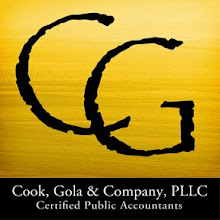Previously, the IRS issued revised withholding tables incorporating the Making Work Pay Tax Credit, one of the key provisions of the American Recovery and Reinvestment Act.
That change resulted in more take-home pay for about 120 million American households and provided an immediate economic stimulus.
The new procedure for pensions will make withholding more accurate for pension recipients.
Those who should pay particular attention to their withholding include married couples with two incomes, individuals with multiple jobs, dependents, some Social Security recipients who work and workers who do not have valid Social Security Numbers.
Making sure you don’t owe the IRS
While the newly announced procedures apply only to pension payments, the IRS also is gearing up for a wider outreach campaign to educate pensioners and other taxpayers about the withholding tables and Recovery payments.
The IRS will work with partner groups to provide taxpayers information to make sure they have the appropriate withholding for their situation.
The IRS will also work on developing a variety of brochures, video and audio materials to help educate taxpayers.
The change announced today will help some pensioners avoid a smaller refund next spring, or in some situations a balance due.
A wide variety of factors, such as outside jobs and other earned income, can affect how much, if any, withholding should be done by people receiving a pension in order to satisfy their annual tax liability.
Pension adjustment is optional
The optional adjustment procedure that may be used by those paying pensions is available in Notice 1036-P, Additional Withholding for Pensions for 2009.
The on-line version of Publication 15-T, New Wage Withholding and Advance Earned Income Credit Payment Tables, is also expected to be available now.
Pension payors are not required to use this new procedure and may continue to use only the February 2009 withholding tables.
For plans that adopt the new procedure, withholding on pension payments will be automatically adjusted with no action needed by pensioners.
The IRS encourages pension payors who choose to implement the new withholding adjustment procedures to contact retirees who previously submitted a Form W-4P, Withholding Certificate for Pension or Annuity Payments, requesting additional withholding after the February withholding tables were issued.
People who believe their current withholding may not be enough for their personal situation can perform a quick check by using the IRS withholding calculator on http://www.IRS.gov.
Any necessary adjustments can be made by filing a revised Form W-4, Employee’s Withholding Allowance Certificate, with their employer.
More information is available at http://www.IRS.gov.
Taxpayers and payors can download forms and publications from this Website or request a free copy by calling toll free 1-800-TAX-FORM (1-800-829-3676).



